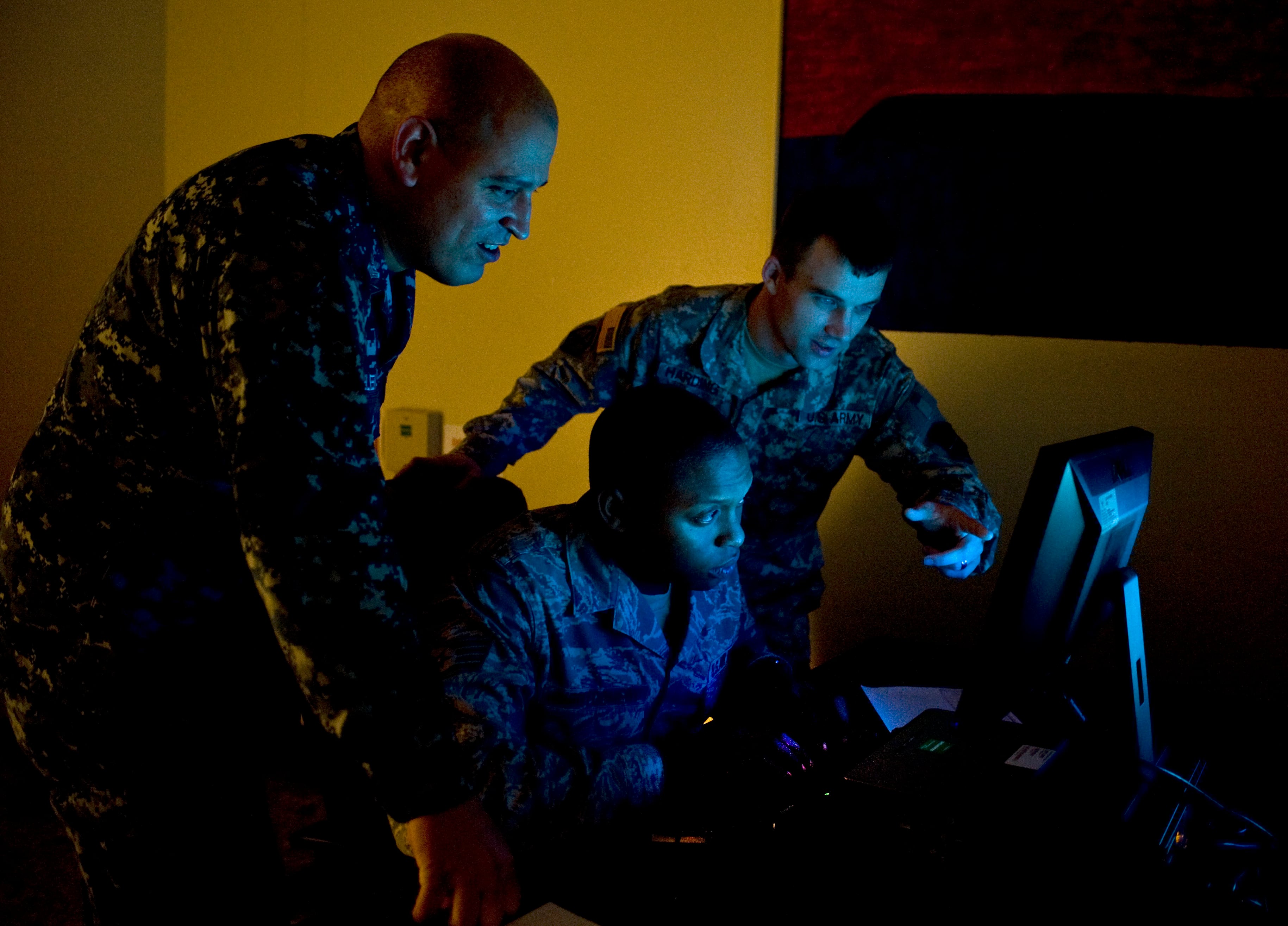Cyber Command has stood up forward-deployed planning cells within the combatant command staffs to help better coordinate offensive and defensive cyber effects.
The entities, called Cyber Operations-Integrated Planning Elements, or CO-IPE, are weeks-old. They will do all the planning for Department of Defense Information Network operations, defensive cyber operations, internal defensive measures and offensive cyber operations, said Army. Col. Paul Craft, the director of operations J3 at Joint Force Headquarters-DoDIN, who spoke Tuesday during a presentation at the Cyber Pavilion of the annual Association of the U.S. Army conference.
“These are planners that are now sitting in the combatant commands. This has never happened before. This is brand new stuff,” Craft said.
Each head of their respective service cyber component command — Army Cyber Command, Fleet Cyber Command, Marine Corps Forces Cyberspace Command and Air Forces Cyber — also serves as a head of the cyber division of Joint Force Headquarters. These divisions are responsible for providing effects to specific combatant commands.
“Just like air, land, sea and maritime power projections, what we’re working with the combatant commands to do is project power in, from and through cyber, integrate it in their battle plans so its timing and tempo is set by the commanders in the field based on the scheme of maneuver that they have on the ground,” said Maj. Gen. Christopher Weggeman, commander of Air Forces Cyber, regarding what he offers combatant commanders in his role.
“What can cyber do? How does cyber become the artillery shell? How does cyber become the bomb? How does cyber make electronic warfare more effective? Whenever they have a target or a targeting problem, they’ll put it up for all the components to look at,” Weggeman added. “If they say they need to take out an integrated air defense system, whether they’re using F-16s or suppression of enemy air defense, now they have us. They’ll say: ‘Gen. Weggeman, what can you offer and what capabilities do you have?’ We would say: ’We have X, Y or Z.’ ”
Craft explained there will be three flavors of CO-IPEs: large, medium and small. The large CO-IPE teams would go to places such as U.S. Pacific Command, U.S. European Command or U.S. Central Command. Medium-sized teams would go to the other remaining geographic combatant commands, while the small teams would be with the functional combatant commands such as U.S. Strategic Command or U.S. Transportation Command.
Craft was sure to clarify that these planners are not operators; they are just planners and exist within joint intelligence, operations, plans and development — respectively known as J2, J3, J5 and J7.
This model is almost identical to what U.S. Special Operations Command has at each combatant command, said Bill Leigher, director of DoD cyber programs at Raytheon. These entities — such as U.S. Special Operations Pacific or Special Operations Command Central — are technically attached to the combatant command, but their role is to be that conduit back to SOCOM headquarters in Tampa, Florida, for all the combatant commands, Leigher told C4ISRNET on the sidelines of the AUSA convention.
SOCOM has been described as a model and a path that Cyber Command can emulate.
“There’s never been anything Cyber Command that was locked in a tight mesh with the combatant commanders. This is really what this does,” said Leigher, a retired admiral who helped stand up Fleet Cyber Command. “If you started to look at a campaign — say, a North Korean campaign, or something that is longstanding like in Afghanistan — you really do have to have the cyber planners working with the [combatant command] planners day in and day out thinking about the effects at the campaign level.”
Having just celebrated its seventh birthday, Cyber Command is not yet mature enough to offer this kind of capability, Leigher asserted, adding this is probably a pretty natural evolutionary step.
Traditional military commanders at the combatant command level might not know what cyber effects they have at their disposal during planning and operational phases of operations, partially “because it’s just not mature enough in knowing what to ask for from the traditional ops and planning cycle,” Leigher said. “I think this will provide a pretty good service to the [combatant commanders] — that makes sense to me.”
Craft noted that these planners can offer the combatant commanders the types of capabilities they might need to achieve a mission objective both from the offensive and defensive side, feeding that information back to their main elements in the United States that will remotely provide the actual effects.
Mark Pomerleau is a reporter for C4ISRNET, covering information warfare and cyberspace.








